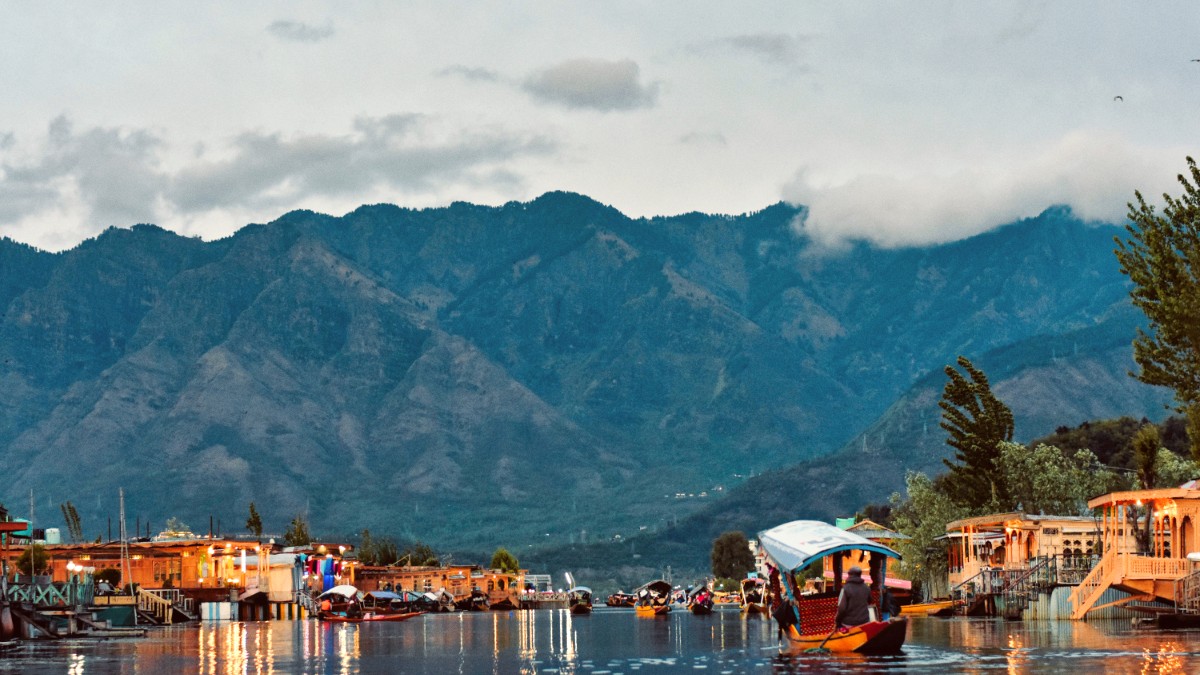
Jammu And Kashmir, India
These places represent the essence of Srinagar, drawing visitors from across the world. Each offers an unique glimpse into the city's natural beauty and historical significance.
Plan your visits to take advantage of calmer times for a more peaceful experience.
Shalimar Bagh is the largest. Nishat Bagh has lake views. Chashma Shahi has a fresh water spring.
Mainly a shopping destination for handicrafts, it also showcases artisan techniques.
Observe artisans at work if demonstrations are available.
A reliable place for genuine Pashmina and carpets.
Offers insight into the skill and effort involved in creating these items.
Provides a chance to see various crafts under one roof.
Srinagar’s historical sites share tales of rulers, religious transformations, and architectural advancements.
A revered Muslim shrine on Dal Lake's northern banks. It houses a sacred relic, the Moi-e-Muqqadas, a hair of Prophet Muhammad. Open daily; modest dress needed.
A seven-terraced Mughal garden and monument, once a Sufi school and observatory. It has panoramic views of Dal Lake and the city. Small entry fee applies.
A unique mosque built entirely of smooth, grey stone by Empress Nur Jahan, located on the banks of the Jhelum River.
One of the oldest and largest mosques in Srinagar, in the Old City. Known for its Indo-Saracenic architecture with 370 wooden pillars. Open daily; modest dress needed.
Avoid visiting during prayer times if not participating, out of respect for worshippers.
Hazratbal Shrine on Dal Lake, Jamia Masjid in the Old City, Pari Mahal on a hillside, and Pathar Masjid by the Jhelum River.
A calmer, cleaner alternative to Dal Lake, good for serene houseboat stays and peaceful Shikara rides. Surrounded by willow and poplar trees.
This garden showcases numerous large Chinar trees, an iconic symbol of Kashmir. It offers a tranquil setting for a stroll.
Unique agricultural plots on Dal Lake where vegetables grow on floating beds. The floating market (5-7 AM) shows vendors trading from Shikaras.
Srinagar's natural beauty extends beyond its famous lakes, offering serene parks and stunning viewpoints.
For those seeking to explore beyond the usual tourist trails, Srinagar holds some lesser-known but equally enriching sites.
These places offer unique historical and cultural experiences away from larger crowds.
A historic fort atop Hari Parbat hill, with commanding panoramic views of Srinagar. The hill also holds the revered Sharika Devi Temple (Hindu goddess Durga) and a Gurudwara.
Located a short drive from the city, this Neolithic settlement site offers a glimpse into ancient human habitation in Kashmir, dating back to 3000 BCE.
A lesser-known but historically noteworthy mosque with beautiful wooden architecture, located near the Idgah ground.
For a understanding of these sites, hiring a local guide is a good approach.
Srinagar's charm extends to various other locations, each with its own story.
A beautiful garden located near the Tulip Garden, offering a wide array of plants and flowers in a well-maintained setting. Good for a peaceful stroll.
A wooden mosque with intricate papier-mâché work, located on the banks of the Jhelum River. It has cultural and architectural significance.
Asia's largest tulip garden, blooming spectacularly in spring (usually March-April). A display of millions of tulips against the Zabarwan hills.
Consider guided tours to cover multiple attractions efficiently. They often provide historical context.
Find tours on GetYourGuideSpring (March-April) offers blooming flowers, especially at the Tulip Garden. Autumn (October-November) presents colorful Chinar trees.
A great way to experience the Floating Market and peaceful lake at dawn. A unique cultural observation.
Group attractions by location (e.g., Dal Lake and Mughal Gardens) to save travel time.
For religious sites, dress modestly and be aware of prayer times.
The SPS Museum presents a vast collection detailing Kashmir's past and artistry.
The Kashmir Government Arts Emporium is a shopping destination that also has cultural significance.
When visiting religious sites, modest dress is a common practice.
For mosques, women should cover their heads. It shows respect for local customs and traditions.
Discover some features of Srinagar's top attractions.
Experience the tranquil waters, floating gardens, and houseboats. Sunset views are specifically beautiful.
Stroll through meticulously maintained terraced gardens, with fountains and water channels. Each garden has its unique design and history.
The Shankaracharya Temple atop a hill offers panoramic views of the entire Srinagar valley and Dal Lake.
Agree on Shikara ride prices before you begin your journey. Fares vary based on duration and route.
Explore lake toursAllow ample time for exploration; each garden has its distinct beauty. Autumn colors from Chinar trees are spectacular.
The climb involves stairs. Remember, cameras and mobile phones are not permitted inside the temple premises.
For Hari Parbat Fort, inquire locally about current access rules, as special permission may be needed.
Confirm current timings for the SPS Museum, as they can vary seasonally.
When visiting revered Muslim shrines like Hazratbal or Jamia Masjid, respectful attire is a common practice.